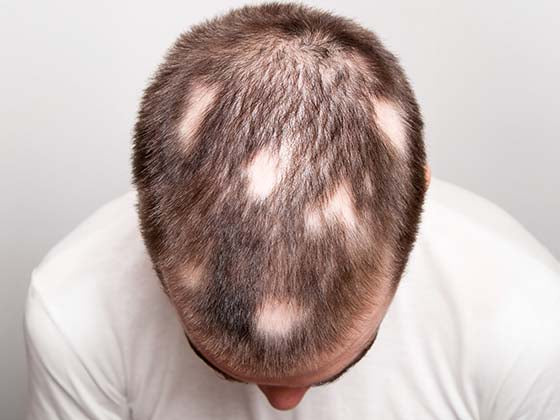During the chilly winter months, fighting dry hair requires extra care and attention. Hydrate from within by using a moisturizing shampoo and conditioner, limiting hair washing, rinsing with cold water, deep conditioning treatments, oil treatments, avoiding hot styling tools, protecting your hair, trimming on a regular basis, and using a humidifier. Occasionally, some special advice for coping with winter hair concerns and keeping your hair moisturized is provided. Remember that everyone's hair is different, so try these tips and tweak your routine as needed to find out what works best for you. If you are patient and consistent with your hair care routine, you will notice improvements in the hydration and overall condition of your hair over the winter season.
Winter's Impact on Hair Health: Dryness and Beyond

Winter can have a significant impact on hair health in ways other than dryness. Here are some additional winter hair effects and how to avoid them:
-
Static electricity and frizz: Cold, dry air can cause static electricity and frizz in the hair. Use an anti-static spray to prevent this from happening, or use a small amount of leave-in conditioner or hair oil to control flyaways. Over Brushing can exacerbate static electricity in your hair.
-
Dryness of the Scalp: The combination of indoor heating and cold weather can cause the scalp to become dry and itchy. Use a hydrating scalp serum or a few drops of thin oil, such as jojoba or argan oil, to massage your scalp on a regular basis.
-
Scarf and Hat Hair: Using scarves and hats can flatten your hair and leave unsightly dents in it. To avoid this, select hats made of friction-reducing materials, or place a silk or satin scarf between your hair and the hat. After taking off the hat, restyle your hair with a wide-toothed comb or your fingers.
-
Lack of Sun Exposure: Vitamin D, which is essential for healthy hair, can become deficient during the winter months due to reduced sun exposure. After speaking with your healthcare provider, think about taking a vitamin D supplement to support the general health of your hair.
-
Reduced Hair Growth: During the winter, some people's hair growth is slightly reduced. This is thought to be a normal reaction to the body storing up nutrients and energy during the colder months. Maintaining a healthy lifestyle with a balanced diet, regular exercise, and stress management is important as these things support general hair growth.
-
Brittle Hair: Your hair may become more prone to breakage and brittleness in cold, windy, and heated indoor environments. When you are outside, cover your hair with a hat or scarf for protection, and use a moisturizing conditioner to strengthen and hydrate it.
-
Damage from Heat Styling: Using heated styling tools more frequently in the winter may tempt you. However, using too much heat can make your hair even more dry. If you want to minimize damage, use less heat styling or heat-protectant sprays and lower heat settings.
-
Dehydration: The effects of dehydration brought on by cold weather can be felt not only on your general well-being but also on the state of your hair. Stay hydrated and keep the moisture level in your hair balanced by drinking plenty of water.
You can lessen the damaging effects of winter on your hair by being proactive and implementing these suggestions. In order to keep your hair healthy, moisturized, and vibrant throughout the winter season, remember to follow a consistent hair care routine and pay attention to your hair's individual needs.
Why Does Hair Become Dry in Winter?
Due to a combination of internal and external factors, hair becomes dry in the winter:
-
Cold Weather: Cold temperatures cause the air's humidity to drop, making it dry. The environment's dryness can dehydrate the hair and cause it to lose its natural moisture.
-
Indoor Heating: To keep homes and workplaces warm during the winter, indoor heating systems, such as central heating or electric heaters, are frequently used. However, these heating methods can further dry out the hair and scalp because they produce dry indoor air.
-
Hot Showers: While enjoying a hot bath or shower during the winter months can be soothing, the hot water strips the hair and scalp of their natural oils, leaving them dry. It is recommended to wash your hair in lukewarm water to avoid over-drying.
-
Reduced Sebum Production: The sebaceous glands in the scalp produce sebum, a natural oil that helps to hydrate and protect the hair. However, during winter, these glands may produce less sebum, resulting in dryness and a lack of moisture in the hair.
-
Outdoor Elements: Winter weather frequently brings snow, ice, and strong winds. These factors can deplete the hair of moisture, leaving it dry, brittle, and vulnerable to breakage.
-
Overuse of Heat Styling Tools: People frequently use blow dryers, curling irons, and straighteners in an effort to combat the cold and keep their desired hairstyle. These tools excessive heat can dry out the hair, cause damage, and deplete its moisture.
-
Lack of Sun: Less sun exposure during the winter months means less naturally occurring vitamin D production. The health of your hair depends on vitamin D, and a lack of it can cause dryness and other issues with your hair.
Understanding the Effects of Dry Hair
Dry hair can have an effect on many things, such as appearance, texture, and general health. The following are a few typical effects of dry hair:
-
Rough Texture: Dry hair frequently has a rough, coarse texture. It might be fragile, rough, or straw-like to the touch, making it challenging to manage and style.
-
Flyaways and frizz: Dry hair is more prone to flyaways and frizz. The hair becomes static and stands out due to a lack of moisture, giving it an unruly and frizzy appearance.
-
Dullness: Hair that is dry often lacks shine and appears lifeless and dull. The hair appears dull and unhealthy because the natural oils that reflect light and give it a glossy appearance need to be improved.
-
Tangles and Breakage: When trying to detangle or comb dry hair, it is more likely to tangle, which can result in breakage. The hair is more brittle and vulnerable to damage when there is not enough moisture in it.
-
Split Ends: Split ends are more likely to appear in dry hair. The hair strands split as a result of the ends of the hair shaft becoming dry and brittle. The appearance of split ends can result in thinning and uneven hair.
-
Lack of Elasticity: Elasticity is frequently absent in dry hair, which limits its ability to stretch and recover from deformation. This may cause more breakage and make styling the hair more challenging.
-
Problems with the scalp: Dry hair frequently comes with a dry, itchy scalp. Lack of moisture can cause itchiness, flakiness, and even dandruff-like conditions on the scalp.
-
Styling Challenges: Dry hair is generally more difficult to style. It might not hold styles well, making it more challenging to create or keep desired hairstyles throughout the day.
Treating Dry Hair: Proven Techniques and Best Practices

It takes a combination of appropriate hair care methods and industry standards to treat dry hair. Here are some tried-and-true methods to help reduce dryness and enhance the health of your hair:
-
Moisturizing Shampoo and Conditioner: Use a shampoo and conditioner designed specifically for dry hair. Look for moisturizing ingredients such as glycerin, natural oils, shea butter, or hyaluronic acid in your products. Sulfate-containing shampoos should be avoided because they can strip away natural oils.
-
Gentle Cleansing: Use lukewarm water to wash your hair, as hot water can further dry out the hair and scalp. Massage the shampoo into your scalp gently, concentrating on the roots, and thoroughly rinse. Apply conditioner from the mid-lengths to the ends of your hair and leave it on for a few minutes before rinsing.
-
Deep Conditioning Treatments: Include deep conditioning treatments in your hair care routine on a regular basis. Use a deep conditioner or hair mask designed specifically for dry or damaged hair. Apply it to clean, damp hair and leave it on for the recommended amount of time for maximum hydration and nourishment.
-
Leave-In Conditioner: After washing your hair, apply a leave-in conditioner or a small amount of lightweight hair oil to the lengths and ends. These products add moisture and help keep you hydrated throughout the day.
-
Limit Heat Styling: Use heat-styling tools such as blow dryers, curling irons, and straighteners sparingly, as they can deplete moisture from the hair. If heat is necessary, use lower heat settings and spray on a heat protector before using it.
-
Air-Dry or Diffuse: Whenever possible, allow your hair to air-dry instead of using heat-styling tools. If you prefer to use a blow dryer, use a diffuser attachment on a low heat setting to avoid heat damage.
-
Protective Hairstyles: Choose protective hairstyles such as braids, buns, or updos to keep your hair ends tucked away. This reduces exposure to environmental elements while also reducing friction and breakage.
-
Regular Trims: Arrange routine trims to get rid of split and dry hair. Trimming encourages healthier hair growth and helps stop further damage.
-
Limit Chemical Treatments: Chemical procedures such as hair dyeing, perming, or relaxing can exacerbate dryness. Reduce the frequency of such treatments or look into less damaging options for hair care.
-
Healthy Lifestyle: Consume a diet that is balanced and full of vitamins, minerals, and the essential fatty acids your hair needs to stay healthy. Drink a lot of water and try to keep your stress levels down because stress can make your hair dry.
Essential Steps in Your Winter Hair Care Routine
You can keep your hair healthy and protected during the colder months by establishing a winter hair care routine. The following actions are crucial to incorporate into your winter hair care routine are hydrating shampoo and conditioner, limiting hair washing, lukewarm water, deep conditioning treatments, scalp care, protective styling, reducing the use of heat styling tools, hydrating leave-in products, protecting your hair outdoors, trimming, using a humidifier, and maintaining a healthy lifestyle. Keep in mind that every person's hair is different, so adjust your routine to meet your hair's individual needs. To keep your hair moisturized, healthy, and protected throughout the winter, pay attention to your hair's needs and modify your routine as necessary.
Selecting the Right Products for Dry Hair in Winter
To provide the required moisture and protection for dry hair during the winter, the proper products must be chosen. Here is a guide to assist you in picking the appropriate products:
-
Shampoo and conditioner: Look for moisturizing and hydrating solutions created exclusively for dry or damaged hair. Shampoos containing harsh sulfates should be avoided since they might strip away natural oils. Choose sulfate-free or moderately cleansing shampoos that will clean your hair without drying it out. To give moisture and nourishment, look for conditioners that contain moisturizing elements like shea butter, natural oils (like argan oil or coconut oil), or hyaluronic acid.
-
Hair masks and deep conditioners: Invest in hair masks or deep conditioning treatments that provide strong moisture and nourishment. Look for products that contain avocado oil, olive oil, honey, or aloe vera, since these nutrients help replace moisture and improve the overall health of your hair. To add moisture to your hair, use deep conditioners or masks once or twice a week.
-
Leave-In Conditioners: Choose leave-in conditioners that are lightweight but offer all-day moisture. These items make hair easier to manage, protect it from environmental harm, and help to lock in moisture. Choose leave-in conditioners with glycerin, aloe vera, or silk proteins as their main ingredients.
-
Hair oils and serums: Add a hair oil or serum to your regimen to give your hair more moisture and nourishment. Look for thin oils that you can apply to the ends of your hair to prevent dryness and split ends, such as argan oil, jojoba oil, or almond oil. These oils add shine and aid in locking in moisture without adding weight to the hair.
-
Sprays with a heat protection factor: If you use heated styling tools, it is crucial to guard against heat damage to your hair. Select a heat protection spray that offers both heat protection and moisturizing properties. Search for hair sprays that include keratin, panthenol, or argan oil because these substances help to protect the hair from heat and keep moisture in.
-
Sprays for Refreshment: The dry winter air can cause static and frizz. In order to tame frizz and manage static, think about using a refreshing spray or anti-static spray. Look for hair-calming and static-reduction sprays that include humectants like glycerin or ingredients like chamomile or lavender.
-
Overnight treatments: To maximize hydration, give your hair an overnight moisturizing treatment. Look for overnight masks or treatments that can be used the night before and removed the next day. The deep hydration and repair provided by these treatments can be done while you sleep on dry hair.
-
Products for scalp care: Pay attention to your scalp. Look for oils or serums for the scalp that moisturize and calm dry, itchy scalps. Tea tree oil, peppermint oil, and aloe vera are some ingredients that can help moisturize and maintain a healthy level of moisture on the scalp.
DIY Remedies for Winter Dry Hair

Here are a few successful home remedies you can try if you are looking to treat winter hair dryness:
-
Coconut Oil Mask: As a natural emollient, coconut oil can deeply moisturize and nourish dry hair. Apply warm coconut oil to your hair, concentrating on the ends and dry areas. Allow it to sit for 30 minutes or overnight before shampooing and conditioning as usual.
-
Avocado and Banana Mask: Avocado and bananas are high in natural oils and vitamins, which can hydrate and replenish dry hair. Mash one ripe avocado and one ripe banana together until you have a smooth paste. Apply it to your hair and leave it on for 30 minutes before thoroughly rinsing.
-
Honey and Olive Oil Treatment: Honey acts as a humectant, attracting and retaining moisture, while olive oil conditions and shines the hair. Combine two tablespoons of olive oil and two tablespoons of honey. Apply the mixture to your hair, paying special attention to the ends. After 30 minutes, rinse it off and shampoo as usual.
-
Egg and Yogurt Mask: Eggs provide protein and essential fatty acids, which can help nourish and moisturize dry hair. Yogurt also contains protein and lactic acid. One egg and half a cup of plain yogurt should be thoroughly combined. Apply the mixture to your hair and let it sit for 20 to 30 minutes before thoroughly rinsing.
-
Aloe Vera Gel Therapy: Aloe vera gel is well-known for its hydrating and calming effects. To your hair and scalp, directly apply fresh aloe vera gel. After 30 minutes, rinse it off and shampoo as usual.
-
Apple Cider Vinegar Rinse: By restoring the pH balance of the scalp and hair, apple cider vinegar makes them more resistant to dryness. After shampooing, combine one part apple cider vinegar with two parts water and use the mixture as a final rinse. After letting it sit for a while, thoroughly rinse it.
To make sure you are not allergic to or sensitive to any of the ingredients, always conduct a patch test before using any DIY hair remedy on your entire head of hair. To effectively prevent and manage winter dryness, it is also critical to maintain a balanced hair care routine and adhere to other hair care advice, such as shielding your hair from harsh weather and avoiding overheating styling.
Natural Ingredients Beneficial for Dry Hair
Because of their moisturizing, nourishing, and hydrating characteristics, various natural substances are excellent for dry hair. Including these components in your hair care routine will help relieve dryness and enhance overall hair health. Here are some natural components to think about:
-
Coconut Oil: Coconut oil contains a high concentration of fatty acids that can penetrate the hair shaft and deeply hydrate it. It aids in nourishing and moisturizing dry hair, making it softer and easier to manage.
-
Argan Oil: The kernels of the Moroccan argan tree are used to make argan oil. It contains a lot of vitamins, essential fatty acids, and antioxidants that help repair and moisturize dry, damaged hair. Additionally, argan oil gives the hair smoothness and shine.
-
Avocado Oil: Rich in nutrients like vitamins and minerals as well as good fats, avocado oil is great for moisturizing and nourishing dry hair. It helps to increase shine, lessen breakage, and improve hair elasticity.
-
Shea Butter: Shea butter is a naturally occurring moisturizer that also includes fatty acids, vitamins A and E. It enhances the texture and appearance of the hair while also deeply hydrating it and locking in moisture.
-
Aloe vera: Aloe vera is renowned for its moisturizing and calming qualities. It promotes healthy hair growth, lessens dryness and irritation of the scalp, and hydrates the hair.
-
Honey: Honey is a humectant, which draws in and holds moisture. It aids in moisturizing and softening dry hair, reducing frizz and improving manageability.
-
Jojoba Oil: Jojoba oil is a fantastic moisturizer for dry hair because it closely resembles the natural oils produced by the scalp. It supports healthy hair follicle growth and shines while balancing the scalp's oil production.
-
Olive Oil: Rich in healthy fats and antioxidants, olive oil moisturizes and nourishes dry hair. It contributes to shine enhancement, elasticity improvement, and frizz reduction.
-
Rosemary Oil: Rosemary oil improves blood circulation to the scalp and stimulates hair follicles, promoting the growth of healthy hair. It also has hydrating qualities that can help dry hair.
-
Yogurt: Yogurt's nutrients—including proteins, vitamins, and minerals—help to hydrate and nourish dry hair. The hair shaft is bolstered and given more shine thanks to it.
Home-Made Hair Masks for Dry Winter Hair
Here are some at-home homemade hair masks you can make to fight dryness in the winter:
-
Banana and Honey Mask:
-
One ripe banana should be mashed into a paste.
-
Mix well after adding two tablespoons of honey.
-
Apply the mixture to damp hair, paying special attention to the ends.
-
For 30 to 60 minutes, leave it on.
-
Rinse your hair completely, then shampoo and condition it as usual.
-
Avocado and Olive Oil Mask:
-
One-half of an avocado should be mashed until creamy.
-
Mix well after adding two tablespoons of olive oil.
-
Concentrate on the lengths and ends of the hair when applying the mixture to clean, damp hair.
-
For 30 to 60 minutes, wrap a towel or shower cap around your head to cover your hair.
-
Rinse your hair completely, then shampoo and condition it as usual.
-
Yogurt and Egg Mask:
-
One egg and half a cup of plain yogurt should be thoroughly combined in a bowl.
-
From roots to ends, work the mixture through clean, damp hair.
-
For 20 to 30 minutes, cover your hair with a shower cap or towel.
-
Utilize lukewarm water to thoroughly rinse, then shampoo and condition as usual.
-
Coconut Oil and Honey Mask:
-
In a bowl, combine honey and melted coconut oil in an equal amount.
-
Apply the mixture to the ends of damp or dry hair.
-
Apply the mask to your scalp and hair gently.
-
For at least 30 minutes or overnight, cover your hair with a towel or shower cap.
-
Rinse your hair completely, then shampoo and condition it as usual.
-
Aloe Vera and Castor Oil Mask:
-
Three tablespoons of aloe vera gel and one tablespoon of castor oil should be thoroughly combined.
-
From roots to ends, work the mixture through clean, damp hair.
-
For a few minutes, gently massage the mask into your scalp to promote blood flow.
-
For 30 to 60 minutes, wrap a towel or shower cap around your head to cover your hair.
-
Completely rinse, then shampoo and condition as usual.
Prevention: How to Keep Your Hair Hydrated in Winter

Here are some preventive measures you can take to keep your hair hydrated during the winter months and prevent dryness: Use a hydrating shampoo and conditioner; limit hair washing; use lukewarm water; use deep conditioning treatments; take scalp care; use protective styling; minimize heat styling; use hydrating leave-in products; protect your hair outdoors; get regular trims; use a humidifier; and maintain a healthy lifestyle. By implementing these precautions into your winter hair care routine, you can help keep your hair hydrated, nourished, and dryness-free throughout the season.
Tips for Preventing Dry Hair in Cold Weather
Prevent dryness to keep your hair moisturized and healthy during the winter months. To avoid dryness and maintain healthy hair, moisturize regularly, limit washing, use lukewarm water, protect your hair outside, deep condition on a regular basis, reduce the use of heat styling tools, use a wide-toothed comb, avoid overbrushing, hydrate from within, protect your hair at night, trim, and maintain a healthy diet. You can help avoid dryness and keep your hair healthy and moisturized over the winter months by following these suggestions.
Importance of Regular Conditioning and Moisturizing
Regular conditioning and moisturizing are essential for keeping hair healthy and hydrated. Here's why they are significant:
-
Moisture Restored: Conditioning and moisturizing treatments replenish and retain moisture in the hair. This is especially important in dry and cold weather, when hair can become dry, brittle, and lack moisture. Conditioners and moisturizers hydrate the hair, making it softer, easier to manage, and less prone to breakage.
-
Increases Hair Elasticity: Dry hair is less elastic, which can lead to more breakage and damage. Conditioning and moisturizing treatments promote hair elasticity by hydrating and nourishing the hair shaft. This enables the hair to be stretched and styled without snapping or breaking.
-
Improves Shine and Softness: Hair that is well-moisturized has a natural shine and softness. Conditioning treatments smooth the cuticles of the hair, reducing frizz and creating a smoother surface that reflects light for shinier hair. Moisturizers add a layer of hydration and softness to the hair, making it feel smooth and silky to the touch.
-
Detangling and Friction Reduction: Conditioners have ingredients that detangle hair and lessen friction between strands. This facilitates combing and styling while reducing hair damage and breakage brought on by pulling or tugging.
-
Prevents Environmental Damage: Conditioning and moisturizing products frequently include ingredients that act as a barrier against environmental stressors like pollution and UV rays. This aids in preventing damage to the hair, such as dryness, brittleness, and color fading.
-
Promotes Hair Health: Regular moisturising and conditioning treatments contribute to overall healthy hair. These treatments serve to retain the integrity of the hair strands, decrease split ends, and prevent excessive breakage by keeping the hair moisturised and nourished. Healthy hair is more resistant to damage and maintains its gloss and vibrancy.
-
Preparing the Hair for Styling: Smoothing and moisturizing the hair creates a base that is smooth and hydrated, making the hair easier to manage and style. Hair that has received adequate moisture retains styles better and is less susceptible to heat-related styling tool damage.
The use of various conditioners and moisturizers may be required depending on the type of hair and the condition of the hair, it is important to note. Your hair will stay healthy, moisturized, and at its best if you use the right products for your hair type and frequently condition and moisturize it as part of your hair care routine.
Enhancing Hair Health: Additional Tips and Tricks

Here are some additional suggestions and tricks to improve the health of your hair in addition to routine conditioning and moisturizing:
-
Protect Your Hair from Heat: Limit the use of heat styling tools and always use a heat protectant spray before applying heat. Excessive heat can cause your hair to become dry, brittle, and damaged. When possible, choose styling techniques without heat.
-
Avoid Overwashing: Overwashing can remove natural oils from your hair and cause dryness. Depending on your hair type and level of activity, aim to wash your hair every two to three days or as often as necessary.
-
Use a Wide-Toothed Comb or Detangling Brush: To reduce breakage and damage, use a wide-toothed comb or a detangling brush when combing or brushing your hair. Being gentle and patient, begin at the ends and work up to the roots.
-
Trim Frequently: To keep your hair healthy and to remove split ends, schedule regular trims every 8 to 12 weeks. Trimming encourages healthy hair growth by reducing breakage and further damage.
-
Be Gentle When Drying Towels: Avoid rough drying of towels as it can result in friction and breakage. Instead, gently squeeze out the extra water from your hair using a soft microfiber towel or an old T-shirt.
-
Protect Your Hair from UV Rays: UV rays can harm your hair just like they can your skin. Wear a hat or apply a UV-protectant spray to your hair before going outside to protect it from the sun's damaging rays.
-
Consume a Balanced Diet: Healthy hair requires proper nutrition. To ensure that your diet contains the vitamins and minerals required for healthy, strong hair, make sure to eat a variety of fruits, vegetables, lean proteins, and healthy fats.
-
Keep Hydrated: To keep yourself adequately hydrated, including your hair, drink plenty of water. Your hair will stay moisturized and dryness will be avoided with internal hydration.
-
Avoid Tight Hairstyles: Keep your hair loose by avoiding tight braids, buns, and ponytails. These hairstyles have the potential to damage and break hair follicles by placing stress on them.
-
Protect Your Hair While Sleeping: To avoid friction and breakage, wrap your hair in a silk or satin scarf before bed or sleep on a silk or satin pillowcase. These ingredients are gentler on the hair and aid in retaining moisture.
-
Manage Stress: Stress can cause dryness and hair loss, among other issues with the hair. Use stress-reduction techniques to improve your overall well-being, which can have a positive impact on the health of your hair, such as exercise, meditation, or participating in activities you enjoy.
It is important to recognize your hair type and its particular requirements because each person has unique hair. Try out various methods and products to determine which suits you best. For healthy hair to be achieved and maintained, consistency and patience are essential.
Dietary Changes for Healthy Hair in Winter
On the health of your hair during the winter, changing your diet can have a positive effect. Here are a few diet suggestions to support healthy hair:
-
Foods rich in protein: Include enough lean proteins in your diet, including tofu, eggs, fish, chicken, lean meats, and legumes. Protein is an important building block of hair structure and supports hair growth and vigor.
-
Omega-3 Fatty Acids: Eat foods high in omega-3 fatty acids, which help nourish hair follicles and promote scalp health. Fatty fish (salmon, mackerel, sardines), chia seeds, flaxseeds, walnuts, and avocados are all good sources.
-
Vitamin E: Include vitamin E-rich foods in your diet to promote healthy hair growth and prevent dryness. Almonds, sunflower seeds, spinach, broccoli, and avocados are all good sources.
-
Foods High in Biotin: Biotin, also known as vitamin B7, is necessary for hair health. Include foods high in biotin, such as eggs, nuts (especially almonds and walnuts), sweet potatoes, and spinach.
-
Vitamin C: Consume foods high in vitamin C, which aids in the absorption of iron, a mineral important for hair growth. Vitamin C is abundant in citrus fruits, berries, kiwi, bell peppers, and dark leafy greens.
-
Iron-Rich Foods: Include iron-rich foods in your diet to help prevent hair loss and promote healthy hair growth. Include in your diet lean meats, poultry, fish, leafy greens, lentils, beans, and fortified cereals.
-
Zinc-Rich Foods: Zinc helps to maintain scalp health and promote hair growth. To ensure adequate zinc intake, include foods such as oysters, lean meats, poultry, nuts, seeds, and whole grains.
-
Stay Hydrated: Drink plenty of water to keep your body hydrated, including your hair. Dehydration can cause hair to become dry and brittle.
-
Reduce Sugar and Processed Foods: Sugary foods and processed snacks can contribute to inflammation and have a negative impact on hair health. Instead, choose whole, nutrient-dense foods.
-
Antioxidant-Rich Foods: To promote scalp health and protect hair follicles from oxidative stress, eat a variety of antioxidant-rich foods. Include colorful fruits and vegetables such as berries, tomatoes, spinach, kale, and bell peppers.
-
Balance Nutrient Intake: Make sure you are eating a well-balanced diet that includes a variety of nutrients, vitamins, and minerals. A well-balanced diet promotes overall health, including hair health.
Managing Dry Scalp and Dandruff in Winter
Dry scalp and dandruff are common winter problems due to the cold, dry air and indoor heating. Here are some wintertime tips for dealing with dry scalp and dandruff:
-
Moisturize Your Scalp: To combat dryness, moisturize your scalp on a regular basis. Apply a scalp or natural oil to the scalp, such as coconut, jojoba, or olive oil. Apply the oil to your scalp, gently massage it, and leave it on for a few hours or overnight before washing your hair.
-
Use a Moisturizing Shampoo: Use a moisturizing shampoo designed specifically for dry scalp or dandruff. Look for products with ingredients such as tea tree oil, aloe vera, or salicylic acid, which can soothe the scalp and reduce flakiness.
-
Avoid Using Hot Water: Instead of using hot water to wash your hair, use lukewarm water, as hot water can further dry out your scalp. Hot water can remove natural oils and aggravate dryness and dandruff.
-
Shampoo in Moderation: Avoid over-shampooing, which can strip the scalp's natural oils and contribute to dryness. Wash your hair every two to three days, or as needed, to keep your scalp clean.
-
Use a Gentle Shampooing Technique: Be gentle with your scalp when shampooing. Massage the shampoo into your scalp in a circular motion with your fingertips. Using your nails or scrubbing too vigorously can irritate your scalp.
-
Scalp Exfoliation: Scalp exfoliation can help remove dead skin cells and product buildup, resulting in a healthier scalp. Use a scalp scrub or make your own exfoliating treatment with brown sugar and olive oil. Massage the scrub into your scalp gently, then thoroughly rinse.
-
Apply a Scalp Tonic or Serum: Consider using a scalp tonic or serum designed to nourish and moisturize the scalp. Look for products that include aloe vera, witch hazel, or tea tree oil. Apply the tonic or serum to the scalp as directed.
-
Protect Your Scalp from the Elements: When going outside, wear a hat or scarf to protect your scalp from the cold air. This can help to prevent further dryness while also protecting the scalp from harsh environmental factors.
-
Maintain a Healthy Diet: Eat a well-balanced diet with plenty of vitamins and minerals. Omega-3 fatty acids, zinc, and vitamin E are all beneficial to scalp health. Fish, nuts, seeds, leafy greens, and whole grains should all be included in your diet.
-
Manage Stress: Stress can worsen scalp conditions like dandruff. Use stress-reduction techniques such as exercise, meditation, or relaxation techniques to help reduce stress and promote scalp health.
If your dry scalp and dandruff persist or worsen despite using these tips, see a dermatologist or a healthcare professional for further evaluation and advice. They can make an accurate diagnosis and, if necessary, recommend specific treatments or medicated shampoos.
Conclusion: Embracing a Comprehensive Approach to Dry Hair in Winter

Combating dry hair in the winter necessitates a multi-pronged approach that targets both external and internal issues. You can effectively manage dry hair and preserve its health and hydration during the winter by following a few essential steps and adopting good hair care practices. Begin by modifying your hair care routine to incorporate moisturizing and nourishing products made exclusively for dry hair. To add moisture and protection, use hydrating shampoos and conditioners, deep conditioning treatments, and leave-in conditioners. In order to increase hydration and nourishment, use DIY treatments and natural substances in your hair care routine. Homemade hair masks using avocado, honey, yogurt, and oils can deeply hydrate and nourish your hair. Additionally, protect your hair from harsh weather conditions to prevent dryness. Wear a cap or scarf outside to protect your hair from chilly winds and to limit your exposure to hot styling tools. Remember that a healthy diet and lifestyle play an important role in your hair's health. To maintain hair health from within, eat a balanced diet rich in proteins, healthy fats, vitamins, and minerals. Drink plenty of water to stay hydrated, and try to keep your stress levels as low as possible. Finally, basic hair care practices such as gentle detangling and avoiding excessive heat styling are critical to preserving hair health and preventing dryness.









































